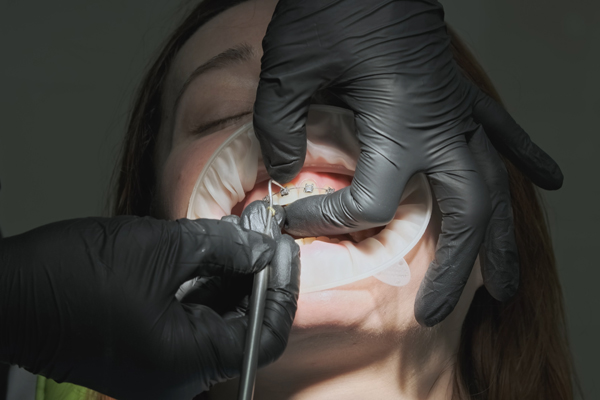 An orthodontist can help you straighten your teeth for a healthy smile you are proud to show off. These days, it is much easier to find an orthodontist who offers the treatments you need that fit both your needs and lifestyle. In addition, patients can enjoy better oral health by understanding the type of care an orthodontist can provide and how to find the right one.
An orthodontist can help you straighten your teeth for a healthy smile you are proud to show off. These days, it is much easier to find an orthodontist who offers the treatments you need that fit both your needs and lifestyle. In addition, patients can enjoy better oral health by understanding the type of care an orthodontist can provide and how to find the right one.
Oral care needs an orthodontist can address
An orthodontist is a specialized type of dentist that focuses on the alignment of the jaw and teeth. Proper alignment of teeth is considered optimal for oral health and function. Orthodontists help patients achieve this through various treatments aimed at slowly moving the position of teeth.
Orthodontists are ADA-recognized specialists in this discipline. This means these practitioners complete a two to three-year residency in orthodontics after completing undergraduate and dental school. This additional training and their day-to-day experience treating a range of orthodontic issues make them the ideal professionals to help patients correct issues with their bite or tooth alignment. The following is a look at the issues orthodontists treat and the tools they use.
Crooked, crowded, and unevenly spaced teeth
A leading reason people seek orthodontic treatment is to fix the way their teeth line up. Crooked teeth are one of the most common issues that make people feel self-conscious when they smile. However, crooked teeth also make thorough brushing and flossing more difficult. Frequently, teeth crowding goes hand in hand with crooked teeth and can interfere with efficient dental hygiene as well.
Orthodontics can also address excessive spacing between teeth. When the excessive spacing between teeth goes untreated, teeth can continue to shift, exacerbating other misalignment problems. This shifting can lead to uneven bites making a person more susceptible to dental damage and infection.
Fixing bite issues
An ideal bite is crucial for chewing and speaking function and limiting the amount of wear and tear on enamel. When a person closes their bite, the top front teeth should overlap the bottom teeth slightly. On the sides of the bite, the top teeth should rest just slightly outside the bottom teeth. All the way around, the bite would fit snugly together. Common deviations from this include the following:
- Overbites or overjets.
- Underbites.
- Open bites.
- Crossbites.
These malocclusions can create uneven wear on enamel and may lead to dental-related headaches or pain. In addition, they may distort the appearance of the bottom half of the face. Finally, many of these malocclusions can cause significant speech problems. Often, once the orthodontist can correct the bite, these issues with pain, speech, and uneven wear are more easily resolved.
Phase 1 orthodontic treatment
Also known as intercepting orthodontics, this treatment aims to treat children between six and nine with a mixture of baby and permanent teeth. Treatment at this age presents a unique opportunity for children developing moderate to severe teeth or bite alignment issues. The goal is to intervene while the adult teeth are still coming in and the jaw is still developing. Intervening at this stage can make correcting these issues easier and help ensure the adult teeth erupt properly. Types of phase one orthodontic treatments can involve special retainers, headgear, limited braces, space maintainers, and functional and expansion appliances.
Orthodontic treatment options
There was a time when orthodontic treatment offered limited options. Therapy primarily involved clunky metal braces. However, times have changed, and now not only have braces become smaller and less noticeable, but also orthodontists have many more treatments to offer their patients.
Many practitioners will offer clear aligners as a discrete and flexible alternative to braces. In addition, some orthodontists offer self-litigating braces or lingual braces (where the brackets are behind the teeth). Finally, with the development of accelerated orthodontics, providers are offering treatments that can be combined with clear aligners or braces to reduce overall treatment times significantly.
Find an orthodontist
Finding the right orthodontist for your needs has also never been easier. Of course, it is still wise to seek recommendations from friends, family, or a regular dentist. However, thanks to the internet, people can easily search for orthodontists in their area, view their services, and read reviews from their patients.
By narrowing down the list, it can be helpful to schedule a consultation before making a final decision. This provides the opportunity to ask important questions about the treatment options available, the types of insurance accepted, and office policies.
Conclusion
No matter what your concerns are, chances are an orthodontist can help address them in a way that fits your timeframe and lifestyle. Many times there is even more than one option for teeth straightening. To learn more about how to find an orthodontist to fit your needs, call our team today.
Request an appointment or call Brooklyn Heights Orthodontics: Susan Liebman, DMD at 718-416-6368 for an appointment in our Brooklyn office.
Recent Posts
Finding an orthodontist offering preventive services is important to protect your oral health and overall well-being. After all, maintaining good oral health goes further than regular brushing and flossing. While dentists are essential to regular preventive care, orthodontists specialize in diagnosing and treating misaligned teeth and jaw alignment issues. This blog will explore the benefits…
Dental health is a critical component of overall health, so patients need to find an orthodontist to coordinate regular preventative care and be the go-to person for dental procedures or emergencies. There are multiple options for people who need to find a new dentist.In many cases, people will begin the process of finding an orthodontist…
Those who move to a new town should find an orthodontist as soon as possible to continue the maintenance necessary for their treatment. Researching the available options can ensure a long-term relationship with a knowledgeable dental professional. This blog will explore these sources and how to select a qualified and experienced orthodontist near your new…


